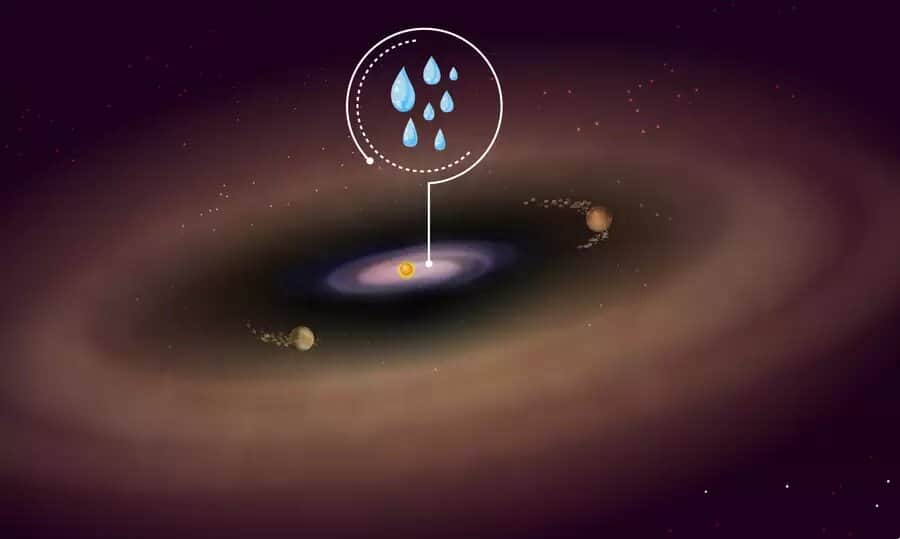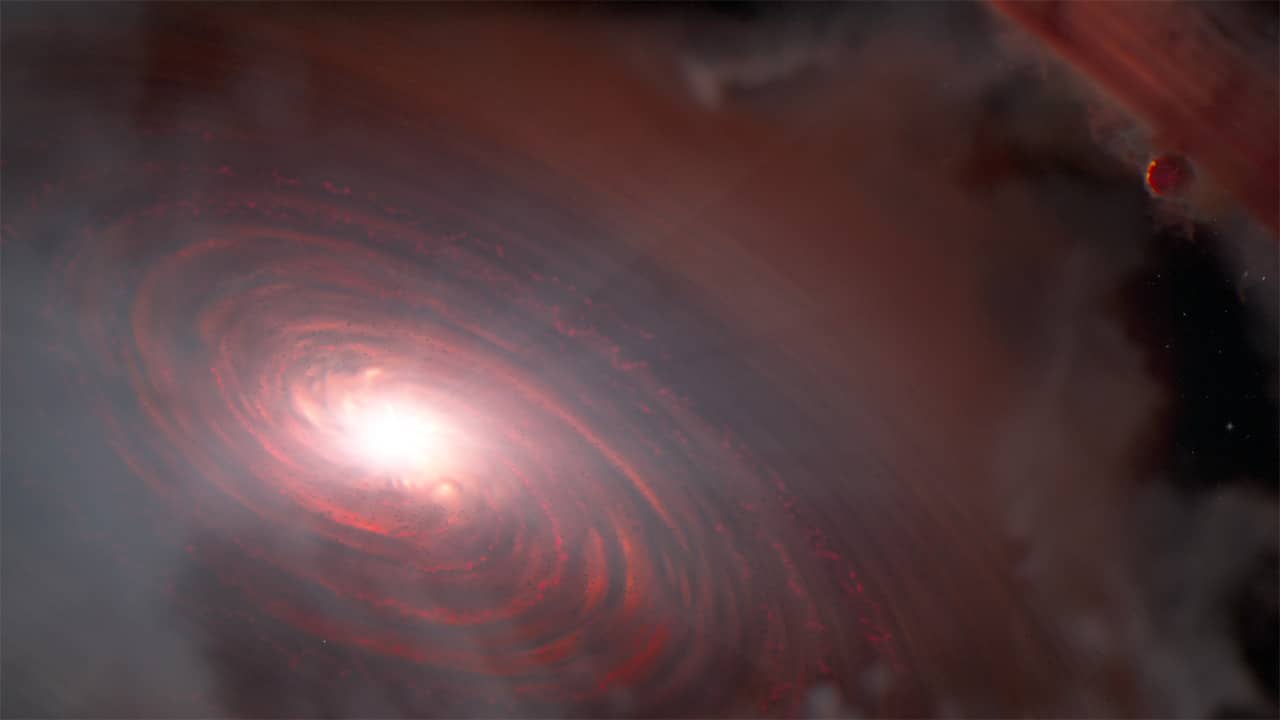The PDS 70 system, located 370 light-years away, is home to two baby gas giant planets and is cooler than our Sun. It’s just 5.4 million years old, offering scientists a unique perspective of how a star system evolves.
Now, scientists have for the first time detected water vapor within the inner disk of the system. Rocky, terrestrial planets may be forming in this zone — and access to this cosmic water reservoir may possibly make them habitable.

Scientists have long debated how water reaches planets during their formation. One commonly accepted theory is that water is delivered to young planets through water-bearing asteroids hitting their surfaces. However, the new finding at PDS 70 opens up the possibility that water may actually be one of the initial ingredients of rocky planets, readily available from the gas and dust disk themselves.
“We’ve seen water in other disks, but not so close in and in a system where planets are currently assembling. We couldn’t make this type of measurement before Webb,” said Giulia Perotti of the Max Planck Institute for Astronomy (MPIA) in Heidelberg, Germany.
A steamy star system
PDS 70, a K-type star, is relatively old for a star with a planet-forming disk, making the discovery of water vapor particularly surprising. Over time, the gas and dust content of planet-forming disks usually declines due to stellar radiation and winds or the growth of dust into larger objects that eventually form planets. Previous studies failed to detect water in the central regions of similarly aged disks, leading astronomers to suspect a dry environment for the formation of rocky planets.
The detection of water vapor in the inner disk of PDS 70 indicates that if rocky planets are forming there, they will have access to water from the beginning. This particular star system has both an inner disk and outer disk of gas and dust, separated by a 5 billion-mile-wide (8 billion kilometers) gap, and within that gap are two known gas-giant planets.
“We find a relatively high amount of small dust grains. Combined with our detection of water vapor, the inner disk is a very exciting place,” said co-author Rens Waters of Radboud University in The Netherlands.

This exciting discovery was made using NASA’s James Webb Space Telescope’s MIRI (Mid-Infrared Instrument) and provides valuable insight into the potential for water to exist on rocky exoplanets orbiting distant stars. But it also raises important questions about how all that water got there in the first place.
The research team considered two possibilities: water molecules forming in place as hydrogen and oxygen atoms combine, or ice-coated dust particles being transported from the cool outer disk to the hot inner disk, where the water ice sublimates and turns into vapor.
Transporting dust across the large gap carved out by the two giant planets would be surprising, but if proven true, it could explain the presence of water vapor in the inner disk.
Another significant question is how the water vapor can survive so close to the star, given that the star’s ultraviolet light should break apart any water molecules. The team believes that surrounding material, such as dust and other water molecules, acts as a protective shield, allowing the water detected in the inner disk of PDS 70 to survive the destruction.
In the future, the team plans to use two more of Webb’s instruments, NIRCam (Near-Infrared Camera) and NIRSpec (Near-Infrared Spectrograph), to further study the PDS 70 system and gain an even greater understanding.
As scientists continue to set their gaze on the universe, discoveries like these will bring us closer to asserting the true potential for life beyond our own solar system.






